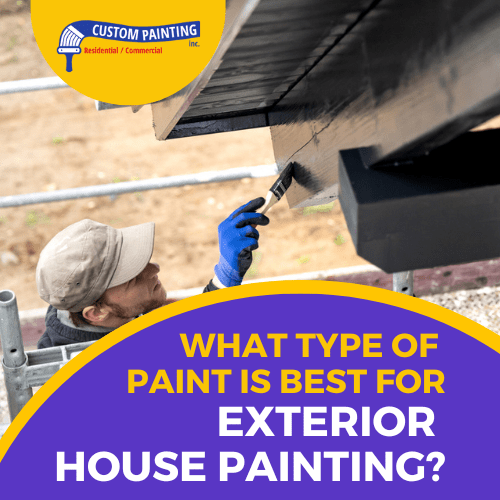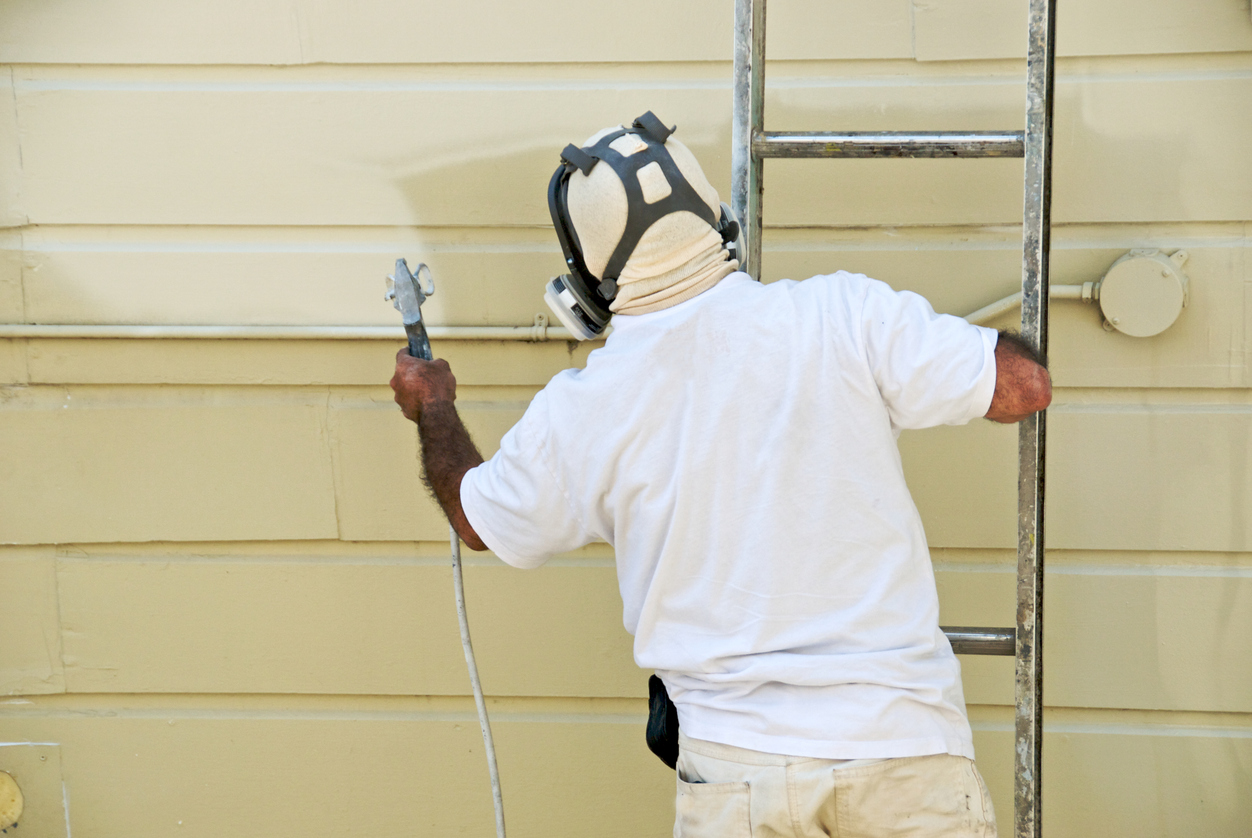Regardless of your Fremont home’s exterior—whether wood, metal, brick, or concrete—it deserves a protective “shield” to slow down degradation and safeguard your residence for many years. That shield is a fresh coat of good-quality paint.
However, a successful exterior paint job isn’t just about using quality paints. Mountain View area professional painters know that even the best paints won’t adhere well without proper preparation. Combined with high-quality paint, good prep work ensures a solid, beautiful, and long-lasting finish.
Planning an exterior paint project can be overwhelming. The right paint depends on your home’s exterior surface and your preferences, and it goes beyond choosing the right colors or finishes.
Types of Exterior Paint
These are the types of paint suitable for exteriors:
1. Latex Paint
Latex paint is famous for its many advantages on exterior surfaces. Being water-based, cleaning up with just soap and water is easy. It dries quickly, allowing for faster project completion. Its flexibility makes it resistant to cracking and peeling, ensuring a longer-lasting finish. Also, latex paint is budget-friendly and versatile, suitable for various surfaces, including wood, vinyl, and aluminum siding.
Pros:
- Water-based, easy cleanup.
- Quick drying.
- Flexible and resists cracking.
- Budget-friendly.
- Suitable for various surfaces like wood, vinyl, and aluminum siding.
Cons:
- Less durable in extreme weather.
- It can show brush strokes.
2. Acrylic Paint
Acrylic paint is known for its high durability, making it an excellent option for areas with harsh weather conditions. It retains color well over time and is resistant to UV rays, preventing fading. This type of paint is suitable for a range of surfaces such as wood, siding, and stucco, providing a resilient and vibrant finish that can withstand the elements.
Pros:
- Highly durable.
- Suitable for harsh weather conditions.
- Retains color well and is UV resistant.
- Ideal for wood, siding, and stucco.
Cons:
- More expensive than latex.
- Requires more prep work for optimal adhesion.
3. Oil-Based Paint
Oil-based paint offers a rugged, durable finish ideal for high-traffic areas and surfaces requiring extra protection. It has a longer drying time than water-based paints and emits a strong odor during application. However, its durability makes it an excellent choice for metal surfaces and areas that endure a lot of wear and tear.
Pros:
- Provides a hard, durable finish.
- Excellent for high-traffic areas and metal surfaces.
Cons:
- Longer drying time.
- Strong odor during application.
- Requires solvents for cleanup.
4. Epoxy Paint
Epoxy paint is highly durable and chemical resistant, perfect for concrete surfaces and garage floors. It provides a tough, long-lasting finish that can withstand heavy use. Proper surface preparation, which includes thorough cleaning and sometimes etching of the surface, is crucial for epoxy paint to adhere correctly.
Pros:
- Extremely durable and chemical-resistant.
- Ideal for concrete and garage floors.
Cons:
- Requires thorough surface prep.
- It can be challenging to apply.
- Limited color options.
5. Elastomeric Paint
Elastomeric paint is highly flexible, making it ideal for surfaces prone to cracking and movement. It offers excellent waterproofing properties, protecting against moisture and water damage. This paint is commonly used on stucco, masonry, and other porous materials, providing a robust and weather-resistant barrier that adapts to the surface’s expansion and contraction.
Pros:
- Highly flexible, ideal for surfaces prone to cracking.
- Excellent waterproofing properties.
- Great for stucco, masonry, and porous materials.
Cons:
- More expensive.
- Requires multiple coats for best results.
 Paint Finishes
Paint Finishes
For exterior paint finishes, here are your options:
Flat/Matte
Flat or matte finishes are non-reflective, which makes them excellent for hiding surface imperfections. This type of finish is particularly suitable for older homes with exterior flaws you want to conceal.
Eggshell
The eggshell finish has a slight sheen, making it more reflective than flat finishes but still relatively subtle. It’s easy to clean and works well in moderate-traffic areas, balancing durability and aesthetics.
Satin
Satin finishes have a smooth texture and are more reflective than eggshell finishes. This makes them ideal for siding and trim, providing a sleek look while being durable enough to withstand regular cleaning and exposure to the elements.
Semi-Gloss
Semi-gloss paint is known for its high durability and washability. It’s an excellent choice for areas that need frequent cleanings, such as doors, windows, and trim. The finish is more reflective than satin, giving a subtle shine without overpowering.
Glossy
Glossy finishes are very reflective and highlight imperfections, so surface preparation is crucial. This finish is best used for accents and small details where you want a striking, polished look. Glossy paint can add a touch of elegance to architectural features like columns or trim.
Factors to Consider
When painting your house exterior, here are some things to consider:
Surface Preparation
Proper surface preparation is crucial for achieving a long-lasting paint job. This involves cleaning the surface to remove dirt and debris, sanding to smooth out imperfections, and applying a primer to ensure the paint adheres well. Skipping these steps can lead to peeling and uneven coverage, diminishing the lifespan of your paint job.
Weather Conditions
The weather plays a significant role in the success of your painting project. Ideal conditions include mild temperatures and dry weather. Avoid painting during extreme heat, cold, or high humidity, as these conditions can affect paint adhesion and drying time. Typically, spring and fall are the best seasons for exterior painting.
Durability and Longevity
Different paints offer varying levels of durability and longevity. Acrylic and Elastomeric Paints are known for their durability and flexibility, making them suitable for areas with extreme weather conditions. Meanwhile, oil-based paints are known for their tough finish, which is ideal for high-traffic areas but may require more maintenance over time.
Environmental Impact
Consider the environmental impact of your paint choices. Opt for low-VOC (volatile organic compounds) and eco-friendly paints to reduce harmful emissions and improve indoor air quality. These paints are better for the environment and safer for your family and pets.
Color and Finish
Consider the aesthetic appeal and practicality of the paint color and finish. Lighter colors reflect heat and may last longer, while darker colors fade quicker.
Choose a finish based on the look and durability you want. For example, semi-gloss and gloss finishes are more durable and easier to clean, while flat finishes can hide surface imperfections but may not be as durable.
Conclusion
To achieve the best results in San Jose area exterior house painting, it is essential to combine thorough surface preparation with the right type of high-quality paint. By considering factors such as weather conditions and environmental impact, you can ensure a beautiful, long-lasting finish.
For professional results and expert advice, consider hiring Custom Painting, Inc. Our experienced team can help ensure that the most suitable type of paint is chosen for your exterior painting needs in the Bay Area. Contact us today by sending a message or calling us at 925-866-9610. We’d love to help you get started on your next project!


 Paint Finishes
Paint Finishes
